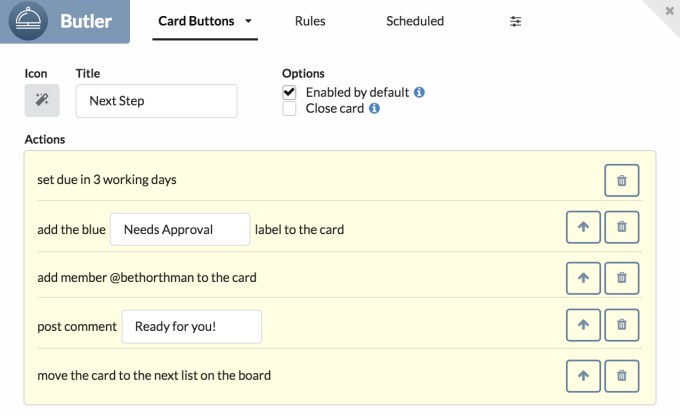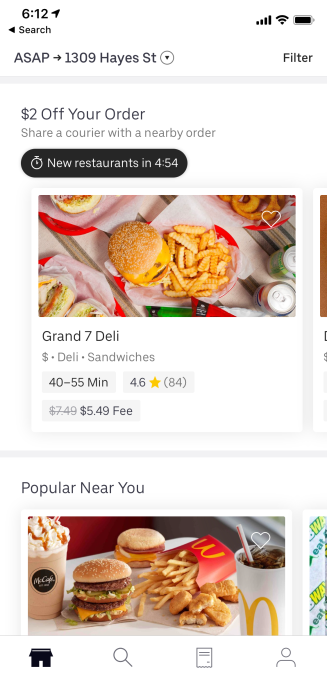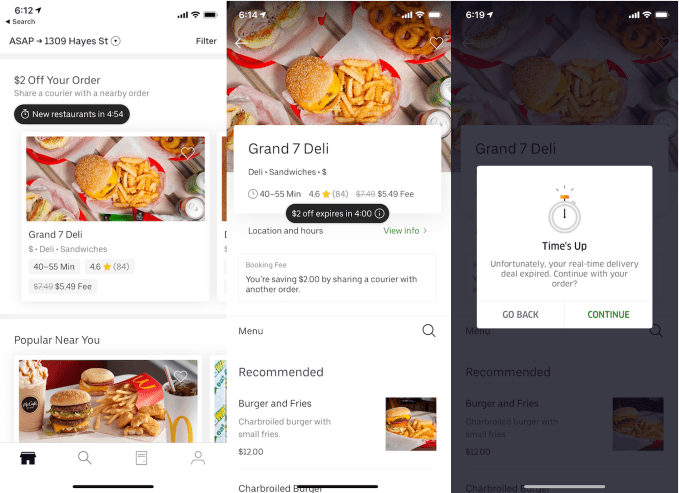If the last few years has seen a growing consensus that the tech industry has a diversity and inclusion problem, then what is clearly needed next are practical solutions. While most people agree that building a diverse and inclusive company culture is easier to achieve the earlier you set out to do so, for startups and even much larger companies it is often difficult to know where to start, let alone what your own eventual D&I strategy might look like.
Conversely, there’s a body of evidence that points to diverse teams creating more successful and longer-lasting companies. Besides, it’s never smart to leave talent on the table. Enter a new initiative from Diversity VC, a nonprofit partnership promoting diversity in Venture Capital, and London venture capital firm Atomico.
The pair have teamed up to launch what may well be an industry-first resource: a practical and hands-on guide for ambitious technology entrepreneurs to “help them build companies that have diversity and inclusion at their core.” The guide can be found online here, and is also in print. It was unveiled last week onstage at Slush 2018 by Diversity VC’s Check Warner and Atomico founder Niklas Zennström.
The objective of the “Founder Guide” is to be a central place for technology companies, large and small to “find pragmatic, actionable advice for planning, implementing and measuring their D&I strategy. It’s also meant to be a work in progress, and with the help of feedback and suggestions, will evolve as the industry’s understanding of D&I develops.
More broadly, the guide focuses on diversity and inclusion in the workplace in its broadest sense, looking at ethnicity, socio-economic backgrounds, disability, gender, sexuality, religious faith, cognitive differences, dependants and caring responsibilities and how all those factors, and the “intersections of those factors,” can impact an individual’s success in tech companies, and therefore the success of companies overall.
In an email Q&A with Diversity VC co-founder and CEO Check Warner, we delved deeper into what the guide hopes to achieve, why D&I matters and what diversity and inclusion might look like as an end goal. I also argued that the way we think about D&I is currently too narrow and needs to put a greater emphasis on social mobility, which at times is seems to be missing from the conversation entirely.
TC: Why did you decide to create a Diversity & Inclusion guide for tech companies? And why was it needed?
CW: The conversation on Diversity & Inclusion until now has focused on highlighting the challenges we face (which are significant), but there’s been very little actionable advice. The idea of the Diversity & Inclusion guide is to move the discussion forward. We want to start a positive conversation around what tech companies can do to promote diversity and inclusion, and we want entrepreneurs to start making simple, meaningful changes today. Sixty-five percent of founders surveyed in the Atomico State of European Tech Report said they didn’t have a Diversity & Inclusion policy for hiring, and 55 percent said there was no Diversity & Inclusion lead in their company (source — Atomico’s State of European Tech Report 2018).
The guide is intended to make it as simple and frictionless as possible to start that conversation and put in place a plan. At the same time, we know that this Guide is only the first step. It’s not a panacea for all ills. But we hope it helps move the conversation forward, and constitutes a step toward tackling the deep and nuanced challenge of creating an industry where everyone has a fair chance to succeed.
The organisation Diversity VC is a nonprofit dedicated to promoting diversity and inclusion in venture capital and tech. We focus on positive interventions and this guide is a high-impact, useful resource for VCs to give their portfolio companies, and for the industry as a whole. Atomico shares this mission and were being asked by their portfolio for help with Diversity and Inclusion, so we joined forces.
We hope that by publishing this guide now, and publishing it in a format which people can contribute and add to through our website www.inclusionintech.com, that we encourage input from companies who have had success in promoting Diversity and Inclusion. We’ve already started to see this happen, as we’ve had several notes from founders with suggestions of other interventions that can be made, even in the two days since the guide was released.
TC: Clearly diversity within the workforce is always going to be a “work in progress,” but in terms of an end goal, what does diversity actually look like?
CW: For us, success looks like a technology and venture capital industry where anyone, from any background, ability, religion, ethnicity, gender, sexuality and socio-economic background can succeed and thrive. We want there to be equity of opportunity between these groups and everyone else.
TC: What would you say to people who believe that although a diverse and inclusive workforce is a noble aim, early-stage companies and founders have much more immediate problems to solve, such as finding product-market fit, fundraising or making their first 10 hires. Therefore, a D&I strategy is nice to have but ultimately a distraction for a startup?
CW: Having a diversity and inclusion strategy is not “additional to” any of these things, but instead a key part of them, and an essential ingredient to success. When it comes to finding product-market fit, having a diverse team has been shown to increase creativity, and improve performance and profitability. A diverse team will also help the company connect to, and empathise with, a broader base of customers, which competitors who have homogenous teams will be in a much worse position to do. Having an inclusive company culture will ensure that a company can attract the broadest range of talent, and therefore pick and retain the very best people.
TC: The guide is pretty dense — yes, I’ve read it! — and packed with lots of actionable advice, but at times asks more questions of a company than it provides answers. Where should a founder or D&I champion within a company start if it all feels a bit overwhelming at first?
CW: Thank you for reading it! We’ve tried as much as possible to focus on practical advice and we have over 40 tech tools and resources included in the guide which can help with everything from hiring to culture to product design. There’s also a two-page summary of the key takeaways to make it as easy as possible for founders to digest. However — the structural inequalities that we’re talking about are multi-faceted and complex — so it’s unfortunately not something that can be simply “solved.” In our research we found the companies that were most successful in fostering a diverse and inclusive culture were the ones that included their employees, at all levels, in inputting and crafting solutions and answers, so we suggest that starting a conversation, asking questions and making sure that the whole company feels part of that conversation is a good beginning.
TC: The guide has a few passages on the role of PR as part of a D&I strategy. Shouldn’t this be one area where it explicitly isn’t about publicity as this leaves companies open to accusations — rightly or wrongly — of being superficial or so-called virtue signalling?
CW: The emphasis we have put on PR is about the need for leaders across the technology industry to show public commitment to promoting diversity and inclusion in their companies. For too long, this is a subject that people have been afraid of talking about for fear of “getting it wrong” or of revealing that they are not making progress fast enough. So long as the commitment to Diversity & Inclusion comes from a place of understanding and the actions being taken are genuine and actually helping, then companies should have nothing to fear in talking about their work in this area. In fact, I would like to see more leaders across the technology industry state, like Niklas Zennstrom has this week, where they are struggling and where they need to make more progress, as I think this will accelerate getting answers!
TC: The report provides some very good tips on how to get “buy in” for a D&I agenda across the whole company and from other stakeholders. Why is this important and what are the biggest mistakes a founder or other D&I champion can make in this regard along the way?
CW: Like any strategic project or undertaking, making sure that there’s a shared goal in terms of what the founder is trying to achieve is important, but it is particularly so when it comes to putting in place a D&I strategy because the impact of getting it wrong compounds as the company grows. One mistake I’ve seen is where well-meaning companies isolate a single group of people and focus their a D&I strategy on them, which may actually be to the detriment of other underrepresented groups, or to those at the intersection of multiple groups.
TC: It is very noticeable that in the “The current state of diversity and inclusion in tech” section of the guide the entire conversation is reduced to the underrepresentation of women in tech, leaving out other marginalised groups or other definitions of diversity. This seems to be quite common across the industry as a whole, where diversity at is times simply a byword for gender imbalances. Do you see this as a problem?
CW: I see this as a big problem. The whole guide is written to address the broad topic of diversity and we have deliberately chosen contributors to reflect these diverse perspectives, from LGBTQ founders, to people with cognitive and physical disabilities, to BAME founders and combinations of the above. Unfortunately the section on the “State of Diversity in Tech” is a reflection of the current frustrating lack of available data on any other aspect of diversity than gender diversity in the tech industry, which makes it very difficult to quantify the challenge.
This is something that Diversity VC and Atomico are working hard on. As an organization, Diversity VC is focused on Diversity & Inclusion in its broadest sense, and one of the big challenges that we set out to tackle was the lack of data on diversity in the VC industry. In 2019 we will be publishing the first-ever study on U.K. VCs that includes ethnicity data, educational backgrounds and career backgrounds, which will also help us understand the socio-economic backgrounds of the VC industry. Whilst this is not nearly enough, it goes some way to helping us understand diversity and inclusion beyond the narrow subject of gender imbalance.
TC: Related to this, socio-economic diversity, or the tech industry’s need to do a better job promoting social mobility as part of a D&I agenda, seems almost entirely lacking from the wider industry conversation and I’m not sure this guide does enough to change that. Isn’t this odd when it would seem evident to anyone who works in the tech industry that economic privilege and lack of social mobility is intrinsically linked to the marginalisation of many underrepresented groups?
CW: I agree that it’s hugely lacking in the conversation and that we need much more focus on this area. For me the biggest mindset shift required is to remove the rigid criteria of what hiring managers and recruiters are screening for when they are making hires. Our case study on Backstage Capital in section 3 is about recruiting through Twitter and Instagram, and having no set criteria for qualifications or subjects studied, and instead, hiring for aptitude and investing in training hires either on the job or through courses. Both apprenticeships and internships are an important part of this conversation and I’d like to see more done to promote these across the industry. At Diversity VC we are running an internship programme which aims to help people who don’t have qualifications (MBA or similar) which are sometimes sought by recruiters for venture capital. We’ve found this internship programme to be an effective way of getting young people into full-time jobs, despite the fact that a recruiter would probably have passed over their CV in a traditional recruitment process.
TC: I say this as a white male who comes from a middle class family (both my parents were teachers): You are a white woman who is private school and Oxbridge-educated and so some might say you are part of the problem as much as the solution. How do you square that circle in the important work you are doing at Diversity VC?
CW: Absolutely — this is something I’m very conscious of. I’ve been privileged in the opportunities I’ve had, which has given me an enormous leg up in getting into the industry. I find it completely unjust that others haven’t had the same chance which made me determined, almost as soon as I got into the industry, to get together with Travis, Lillian, Farooq and Anna, as well as our advisors, to do something about it. But, to echo a sentiment that I’m sure all of us share, the worst thing you can do in the face of something unjust is to stay silent.
The mission and the organization are also so much bigger than any individual. There are over 50 people across the industry that have volunteered on Diversity VC’s data projects, joined training programmes, mentored founders from diverse backgrounds, spoken at schools and universities, contributed to the Guide. In order for Diversity VC to be successful in its aims it is important that the leadership group is as diverse as possible, which is not the case today.
TC: Lastly, it is great to see a practical guide that has the potential to help produce some really tangible improvements in how tech companies approach D&I. If we look ahead, how different do you hope or expect the industry to be with regards to diversity and inclusion in one, five or 10 years?
CW: I hope that in one year’s time the industry is more comfortable and proactive in discussing the subject of diversity and inclusion, and that we have significantly more data than we do today to enable us to target solutions. In five and 10 years’ time I hope that the tech industry will have emerged as a leader in being inclusive and sets an example for other industries to follow. Since it is growing 5x faster than the economy, the impact that getting this right will make is hard to overstate.





 In response to our inquiry, Uber confirmed it’s now testing in some markets a system designed to batch multiple orders from different customers nearby each other to a single restaurant. That way, a single delivery driver can pick up all the orders at once and then speedily distribute them to neighbors or co-workers. Uber must incentivize customers who are close to each other to pick the same restaurant in rapid succession, so it offers a discount.
In response to our inquiry, Uber confirmed it’s now testing in some markets a system designed to batch multiple orders from different customers nearby each other to a single restaurant. That way, a single delivery driver can pick up all the orders at once and then speedily distribute them to neighbors or co-workers. Uber must incentivize customers who are close to each other to pick the same restaurant in rapid succession, so it offers a discount.
